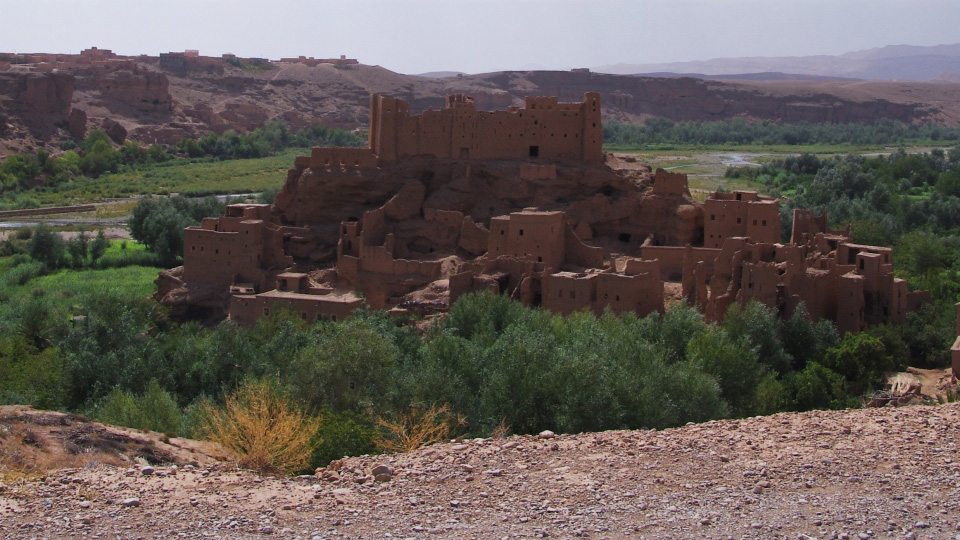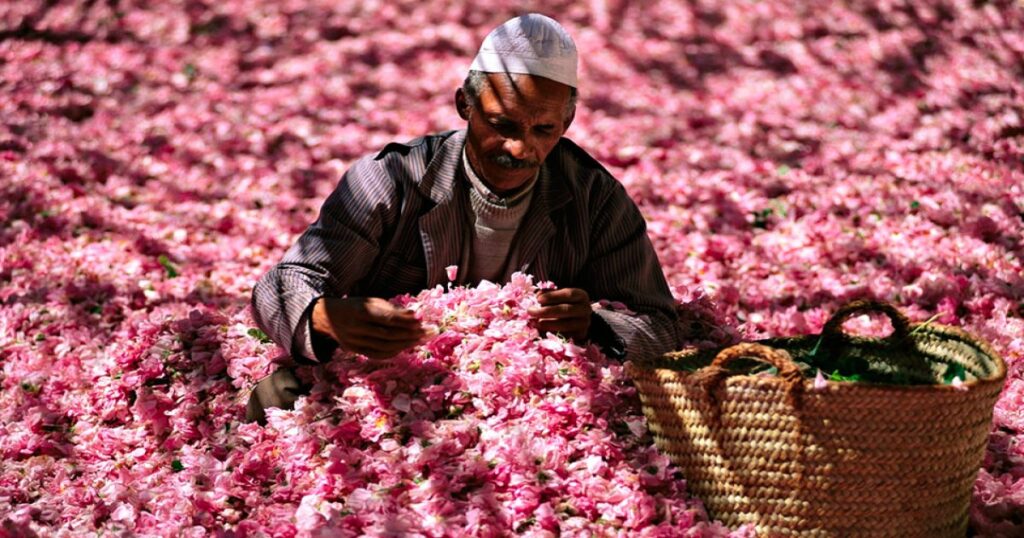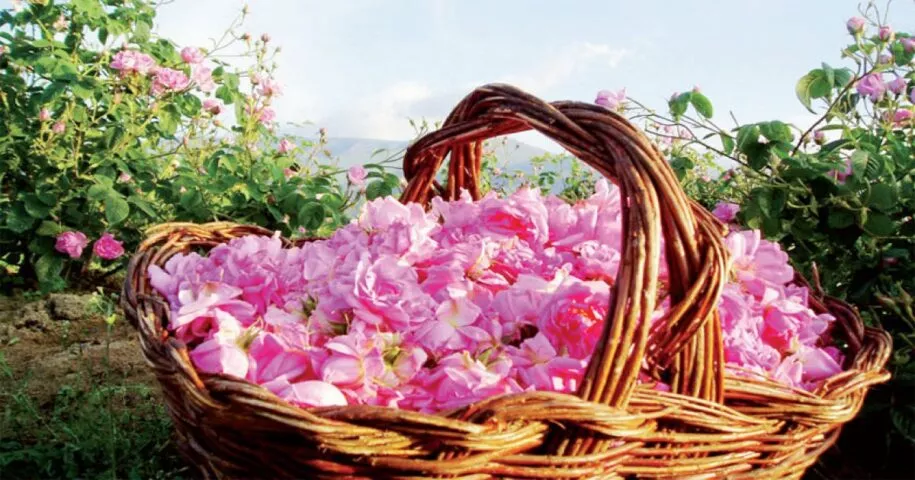Kalaat M’Gouna is a small Berber Amazigh town, located east of Ouarzazate at the foot of the High Atlas. Let’s find out in this article about the city and the rose festival:
What is Kalaat M’gouna
Kalaat M’gouna is derived from the Arabic term “el qal’a,” which means “fortress or citadel,” and M’Gouna because it not only stands on the banks of the oued (river) Dades, but also near the oued M’Goun, its tributary, thus getting its name from the second Moroccan massif, the M’Goun, which peaks at 4070 meters.
The valley of the roses, which stretches for tens of kilometers along the banks of M’ Goun to its throats, is one of Morocco’s most beloved landscapes. It is vital to traverse its trails in April when the roses bloom and exude their perfume mingled with the odors of blossoming almond trees and wheat fields. The moussem of the rose festival is produced after the harvest, which is mainly done by women.

The moussem of roses
Kelaat M’Gouna is a significant economic and social hub in the area, and its population more than doubles during the rose festival.
Indeed, this festival is very popular not only with foreign tourists, but also with Moroccans who come from other cities in the Kingdom to discover the perfumes and cosmetics made from the distillation of rose petals, knowing that rose water is highly valued in traditional daily cooking as well as in oriental pastries.
It typically begins in the second week of May and lasts three days.
People dress up in their nicest attire for this event, spraying each other with rose water and petals and singing and dancing in the streets to traditional dances like as the sword dance, the ahidous, and the bee dance. Miss Roses for the day is a young unmarried lady who rides on a floral and adorned float accompanied by music and singing during the procession.
Region of artisanal tourism and sustainable economy
During this moussem, the population of Kelaat M’Gouna grows dramatically. This location is popular with Moroccan tourists from other towns in the country, as well as numerous people from throughout the globe.
Tourists want to visit an area famed for its rose water fragrances and cosmetics, as well as the kindness and friendliness of its people.
The festival also allows visitors to El-Kelaa to learn about the region’s local fair, artisan, and agricultural goods.
This event helps the region’s economy by bringing in sponsors and visitors each year. It is a yearly custom that goes back to the protectorate period.
Region of folklore tourism
On these days of tremendous celebration, the people of Kalaat M’Gouna and adjacent villages toss rose petals at guests, shower them with rose water, and assemble to elect the queen of roses.
The ladies dress typically in white or black costumes, while the males in traditional Djellabah take the early route to the city center, where the yearly parade is anticipated by everybody.
To commemorate the rose, the Berbers adorn their homes with petals, the women construct necklaces, and they begin singing and dancing.
The procession include traditional formations, “ahidous,” “gnaouas,” and folk dances like as the sword dance, as well as the Miss Rose float. The nights are held in various rose gardens, where everyone may dance and particularly vote for Miss Rose, who is chosen from among the young unmarried females who have enrolled to be queen for a day.
The rose water, treasure of Kalaat M’Gouna
According to oral tradition, the Rosa Damascena was brought back in the 10th century by a group of Berber pilgrims coming from Mecca who were awestruck by the beauty and aroma of this flower. They took back some roses and transplanted them in the Kelaat M’Gouna area.
Some seeds that had fallen on the path would have sprouted and flowered to produce these exquisite roses that have embellished and made this region of the High Atlas famous as the Valley of Roses.
Women collect the delicate petals in April and May, beginning before sunrise. Nearly 1,000 tons will be gathered for distillation in the two facilities, which will be located in Kelaat M’Gouna and Souk-el-Khemis.
The copper stills process 300 kg of petals immersed in 700 liters of boiling water. The steam dissolves the aromatic oils, which are full of essence and move via cooling tubes to a tank, where the rose water is deposited while the essence is floating. The essential oil will be extracted and bottled. The rose is valued for its scent and cosmetic properties; it is also included in traditional pharmacopoeia.

The election of miss rose
During the celebrations, a young unmarried lady is chosen queen for a day and parades atop a decked and scented float, cheered on by many eager onlookers trampling the rose petals that litter the ground.


Leave a Reply